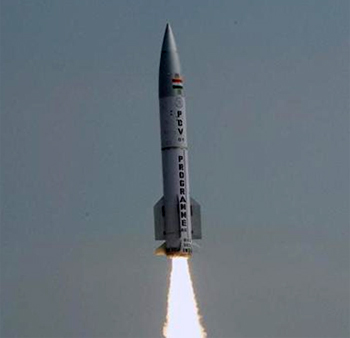INDIAN ARMED FORCES CHIEFS ON OUR RELENTLESS AND FOCUSED PUBLISHING EFFORTS

The insightful articles, inspiring narrations and analytical perspectives presented by the Editorial Team, establish an alluring connect with the reader. My compliments and best wishes to SP Guide Publications.

"Over the past 60 years, the growth of SP Guide Publications has mirrored the rising stature of Indian Navy. Its well-researched and informative magazines on Defence and Aerospace sector have served to shape an educated opinion of our military personnel, policy makers and the public alike. I wish SP's Publication team continued success, fair winds and following seas in all future endeavour!"

Since, its inception in 1964, SP Guide Publications has consistently demonstrated commitment to high-quality journalism in the aerospace and defence sectors, earning a well-deserved reputation as Asia's largest media house in this domain. I wish SP Guide Publications continued success in its pursuit of excellence.
Big Stride in Ballistic Missile Defence
 |
By Lt. General P.C. Katoch (Retd) Former Director General of Information Systems, Indian Army |

Prithvi Defence Vehicle (PDV) Interceptor Missile
February, 11, 2017 was a great day for the DRDO and the nation. At precisely 0745 hours, DRDO successfully test-fired a interceptor missile off Odisha coast and achieved a significant milestone for developing a two-layered Ballistic Missile Defence (BMD) system; an incoming missile was successfully intercepted at a height of 100 kms with a direct hit by an interceptor missile. The interceptor is based on the nuclear-capable Prithvi missile and the target developed for mimicking a hostile Ballistic Missile approaching from more than 2,000 km away was launched from a ship anchored in the Bay of Bengal. In an automated operation, radar based detection and tracking system detected and tracked the enemy's ballistic missile. The computer network with the help of data received from radars predicted the trajectory of the incoming Ballistic Missile. The interceptor that was kept fully ready took-off once the computer system gave the necessary command for lift-off. The Interceptor guided by high accuracy Inertial Navigation System (INS) supported by a Redundant Micro Navigation System moved towards the estimated point of the interception. Once the missile crossed the atmosphere, the Heat Shield ejected and the IR Seeker dome opened to look at the Target location as designated by the Mission Computer. With the help of Inertial Guidance and IR Seeker the missile moved for interception.
The "exo-atmospheric" (outside the earth's atmosphere) interceptor missile tested, also called the PDV (Prithvi defence vehicle), directly hit the target missile at an altitude of 97km. All events were monitored in real-time by the Telemetry/Range Stations, at various other locations. A DRDO spokesman termed the mission test-firing as "PDV mission for engaging the targets in the exo-atmosphere region at an altitude above 50 km of earth's atmosphere", adding, "Both, the PDV interceptor and the two stage target missile, were successfully engaged."
On the same day at an election rally at Badaun in Uttar Pradesh, Prime Minister Narendra Modi said, "Today our scientists have made a missile that can destroy an enemy missile high in the sky. Only four to five countries in the world have done this." In a message to Director General DRDO, President, Pranab Mukherjee said, "I extend my hearty congratulations to all those associated with the successful test-firing of the Prithvi Defence Vehicle (PDV) Interceptor Missile. India now joins a select group of nations having such an effective BMD system. India's defence capabilities and will provide enhanced security against incoming ballistic missile threats. Kindly convey my greetings and felicitations to the members of your team of scientists, engineers, technologists and all others associated with this mission. I wish the DRDO continued success in the coming years".
Earlier, the DRDO had promised a missile shield for New Delhi by year 2014 capable of tracking missiles with a 2,000 km strike range by 2014. However, there were slippages. With the successful PDV test, DRDO is confident of providing the missile shield for the national capital even though the time table for putting it in place has not been disclosed. The PDV test is also a shot in the arm for the DRDO after the setback last December on account of the failed flight of the Nirbhay missile. The successful PDV test would boost the confidence of the DRDO, contributing to developing the Nirbhay missile in the extended 18 months granted for it, especially with the ISRO now integrated with the Nirbhay project. Significantly, the Terminal High Altitude Area Defense (THAAD) system is one of the recent addition to America's anti-ballistic missile arsenal. It has been designed to hit missiles as they dive towards the earth; THAAD can engage with incoming missiles at the maximum altitude of 93 miles above the surface of the Earth. The DRDO appears to have developed something similar, with its experimental two-tier system designed to track and destroy ballistic missiles both inside (endo) and outside (exo) the earth's atmosphere. A third layer, in turn, is planned to tackle low flying cruise missiles, artillery projectiles and rockets in line with the overall aim to achieve near 100% kill or interception probability.





